Single Needle Lockstitch
This is the most common mechanical stitch made by a sewing machine and creates a refined, smooth seam that doesn’t pucker. It uses one needle and two threads, an upper and lower thread, which lock together in the fabric and prevent either thread from pulling out of the material.
Double needle lockstitch
Similar to the single needle lockstitch, this technique uses two needles, is less labor intensive, but also more prone to puckering. If you look inside the leg seam of any standard pair of Levi’s, you’ll see this stitch at work.
Multi-needle
This is a machine that uses more than one needle in the sewing head and can sew the same design onto separate garments at the same time, while producing an array of fabric stitching effects. A multi-needle machine usually has between four to 16 needles, though it can have upwards of 20, allowing it to hold and utilize different thread colors concurrently. It is most commonly used to make embroidery patterns, with the more advanced machines able to trim and change colors automatically.
WALKING foot
This is a method for feeding a workpiece through a sewing machine as it’s stitched. It is most useful on heavy materials and is more commonly found on industrial heavy duty machines than household ones. It’s called a walking-foot because the piece on the machine is reminiscent of an upturned elf shoe.
Overlock serger
This is a finishing stitch that sews over the edge of a material to make an edging, decorative hemming or seaming. This stitch requires a special machine that can create loops on the edges of a material. “Serger” is often used interchangeably with “Overlock” though the term technically is for an overlocking machine that uses automated cutters.
Zig-zag
Exactly what it sounds like, this stitch zig-zags back and forth and is used on stretchy fabrics and to reinforce buttonholes.
programable xy lockstitch
AKA. Programmable Pattern Lockstitch - Automated machines that sew patterns up to 2,700 stitches per a minute. The machine moves on the x and y axis, allowing it to accurately recreate programmed designs and save the data for future use.
COVER STITCH
This is a double or triple stitch used for hemming knit fabrics and seams that stretch. One side of the stitch displays two parallel lines, while the underside connects the parallel lines with a zig-zag pattern.
bar tack
This is a series of extremely close stitches that are used to reinforce garment areas subject to stress or additional wear. Such areas usually include pocket openings, button holes, belt loops, fly openings, tucks, pleats and the corner of collars.
Box x
This stitch is a box with an X through the middle and is usually used to attached straps to bags.
Mauser Stitch
This is a type of flatlock-stitch that can be executed by a specialized machine, forming the thread into a flat, interlocking pattern, which is incredibly durable and comfortable against the skin. This type of stitch can be found on wetsuits, locking two pieces of neoprene together.
Cylinder bed lockstitch
Skilled workers and specialized machines allow us to efficiently perform this stitch, which is used to sew tubular materials such as bags, handbags, wallets and shoes.
Post bed lockstitch
This is an advanced function performed by an industrial sewing machine to stitch heavy weight items such as car seats, furniture and sporting goods.
Blind stitch
This is a unseen stitch that is used in hems or joining two pieces of fabrics. The stitch is usually hidden within the fold of the fabric and only visible when the folded material is pulled apart.
snaps
A small, four piece fastener-set that allows materials to be snapped together. Snaps are inserted into the material with either a manual kick press or automatic snap machine.
Grommets
A two piece metal or plastic eyelet used to protect a hole in a material. The grommet serves as a way to help drain, cinch or attach points on the material and are created with a manual kick press or automatic grommet machine.
rivets
A short metal bolt that is pressed down to fasten two pieces of material together, reinforcing its stress points. You can find rivets on the corner of jean pants pockets or a sturdy pouch.
Pad Printing
This high tech printer is able to transfer the image from a flat 2D plane to a variety of complex 3D surfaces.
Screen printing
A method of printing that transfers ink onto a substrate. To keep certain areas impermeable and fee of ink, a stencil is used to create designs.
HEAT TRANSFER LABELING
This fuses images or text to a fabric using heat. Heat transfer labeling is ideal for materials that will encounter tough environments and industrial washing procedures.
EMBROIDERY
This sewing method uses a needle and thread to add intricate decorations to fabrics and other materials. There are various embroidery styles and techniques.
DIE CUTTING
This is a process that uses a specialized press tool to cut or shape materials such as cloth, rubber, fiber, foil, metal, plastic, paper etc. into a customized mold.
ROTO DIE CUTTING
A mechanized die cutting process that uses a sophisticated machine with rollers, plates, cameras and levers to die cut materials with precision.
HOT / COLD STRIP CUTTING
This machine is used to quickly and accurately cut rolls of elastic, webbing, ribbons, belt loops, hook and loop, nylon cords, leather, safety belts, rubber and vinyl. Hot strip cutting seals edges of synthetic materials with heat to prevent fraying.
ULTRASONIC WELDING
This is welding technique that uses ultrasonic acoustic vibrations to bond two materials together. It is commonly used to join plastics or dissimilar materials without the need of bolts, nails, soldering or adhesives.
FOAM / PLASTIC THERMOFORMING
A method in which a foam or plastic sheet is heated until it reaches a pliable forming temperature. The sheet is then placed on a mold that forms its desired shape as it cools.
FINISHED PACKAGING
The process of pressing, folding and packaging items so they are ready to be shipped.




























